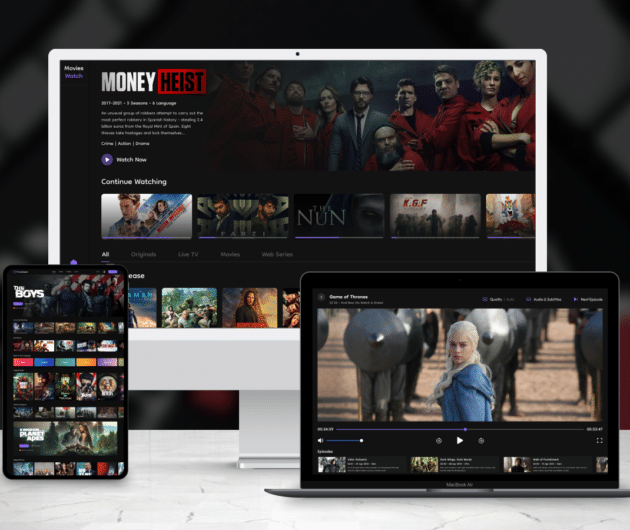Top 5 Popular JavaScript Frameworks of 2018 Web Developers

-
Ankit Patel
- May 25, 2018
- 3 min read
Since the popularity of JavaScript is at its peak, the related frameworks are also in a huge demand these days among the web developers. Today, thanks to the constant evolvement of technology, you can find a plethora of different frameworks for your web development. And these JavaScript frameworks are quite popular among the web developers for a wide range of benefits offered by them. The level of efficiency, safety, in-built features, ample support and cost, these are a few benefits that grab the attention of the web developers and encourage them to use the framework for their JavaScript projects.
If you look around, you will find plenty of frameworks including Reach.js, Backbone.js and so on. Even many new are going to be launched in the year ahead. But, does it mean that you should follow what others are doing? Well, it is not always the way-out! If you ask some of your colleagues developing applications using the JavaScript framework, they will suggest using the most popular frameworks. To simplify the battle of choosing the right framework for your web or app development, we’ve compiled a list of top 5 JavaScript frameworks that will cater all your tedious requirements for sure! Let’s take a look at each of them in more detail.
1. Polymer.JS:
A product from Google, Polymer.JS is comprised of all the necessary components including custom elements, imports, virtual DOM, and templates. All these web components are used by the developers to freely create custom HTML components using its progressive JavaScript library. Features like Uni-directional dataflow architecture make it more conventional for the developers to quickly and efficiently perform all the necessary DOM operations. Moreover, Polymer.JS comes with an inbuilt toolbox which can be used by the developers for developing component-based applications. On the other hand, Polymer.JS is a flexible architecture which allows the developer to frame it with any of the modern frameworks for performing complex tasks. Despite the fact that it is not used frequently, Polymer.JS is one of the best JavaScript frameworks to look for this year.
2. Marionette.JS:
It is an advanced version of Backbone.JS which the developers can use to design the front-end applications. Marionette.JS possesses all the components of Backbone.JS except the Views. Marionette.JS with slight modifications have managed to craft its own base class where all the operations can be performed and implemented to work with events and DOM APIs. The reason why I switched to Marionette.JS from Backbone.JS is because of the boilerplate codes. Backbone.JS is full of them and to avoid it, I have used the Marionette.JS framework. Furthermore, the latest version of Maronette.JS is provided with a view component and supports Underscore and Lodash 4.
3. Knockout.JS:
For the front-end developers looking for an alternate solution of using a light-weighed framework, they can use Knockout.JS for developing client-side applications. Knowckout.JS is built following an old-school approach where the jQuery templates are used as the main format for Views. The best attribute of using Knockout.JS is that it doesn’t hold any dependencies of other libraries and follows model view controller software architecture. The ‘this’ identifier is used to script a set of object properties. It is fundamentally done using the JavaScript classes which are basically the View Models in Knockout.JS. Moreover, its data-binding attribute allows the ‘this’ identifier to connect with the class, making it easier for me to develop client-side applications.
4. Aurelia.JS:
When talking about the open source JavaScript framework, Aurelia.JS is one of the most preferred JavaScript Frameworks used by the developers due to its compatibility with most of the modern JavaScript versions like CoffeeScript, ECMAScript 2016 and TypeScript. Moreover, its custom command line helps the developer for launching applications developed using Aurelia.JS. Apart from all these points, the main reason why it is most popular among the beginners is that it is easier and faster to learn when compared to other frameworks. I have used Aurelia.JS framework to speed up the developing process as its framework allows for the conversion of JavaScript into HTML, providing a cleaner and less complex code.
5. D3.JS:
D3 stands for Data Driven Documents. Graphics, visuals, and animation are the most crucial part of the web application and without it; our web application may seem shallow and depressing. As the name suggests, its data driven attribute allows the designers and developers to use JavaScript framework for creating some amazing visual data reports, bullet charts, data matrixes, artworks, etc. and for me, that makes it is great to use to supplement other frameworks.
Although we’ve identified and discussed only five JavaScript frameworks, being a pro web developer you should have enough maturity to understand the fact that all the frameworks have their own pros and cons. There is nothing like best framework, but it is all up to you to decide which framework is best for you. The market is flooded with a gamut of JavaScript frameworks and frankly speaking they are all having enough capabilities to build client-side applications! So, what you think which JavaScript framework will work best for you? Want a professional guidance for your front-end development? Get in touch with us now!
You may also like

How to Choose the Right Mobile App Development Company
-
Ankit Patel
Imagine this: you’ve got a brilliant app idea that could revolutionize your business, take it to new heights, and transform your entire customer experience. But without the right team to… Read More

How Much Does it Cost to Build a Salon Booking App like Fresha?
-
Ankit Patel
We all have witnessed the buzz in the world of beauty & wellness, and it’s booming every day thanks to the fast-paced and stressful lifestyle. In an era where time… Read More

A Complete Guide to Hotel Booking App Development With Cost
-
Ankit Patel
Whether it’s a corporate business trip or a relaxing vacation with friends, finding the right hotel at the right time and a seamless hotel booking experience is not a luxury… Read More





